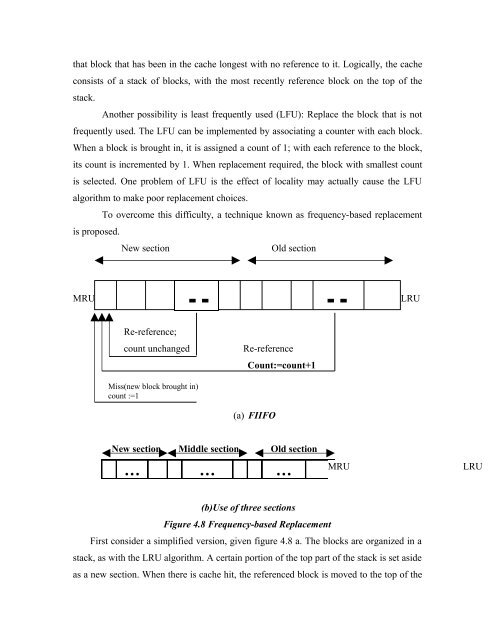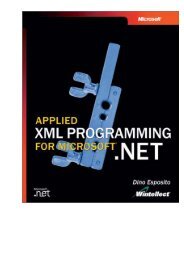I/O Devices and disk scheduling - Csbdu.in
I/O Devices and disk scheduling - Csbdu.in
I/O Devices and disk scheduling - Csbdu.in
You also want an ePaper? Increase the reach of your titles
YUMPU automatically turns print PDFs into web optimized ePapers that Google loves.
that block that has been <strong>in</strong> the cache longest with no reference to it. Logically, the cache<br />
consists of a stack of blocks, with the most recently reference block on the top of the<br />
stack.<br />
Another possibility is least frequently used (LFU): Replace the block that is not<br />
frequently used. The LFU can be implemented by associat<strong>in</strong>g a counter with each block.<br />
When a block is brought <strong>in</strong>, it is assigned a count of 1; with each reference to the block,<br />
its count is <strong>in</strong>cremented by 1. When replacement required, the block with smallest count<br />
is selected. One problem of LFU is the effect of locality may actually cause the LFU<br />
algorithm to make poor replacement choices.<br />
is proposed.<br />
To overcome this difficulty, a technique known as frequency-based replacement<br />
New section Old section<br />
MRU LRU<br />
Re-reference;<br />
count unchanged Re-reference<br />
Miss(new block brought <strong>in</strong>)<br />
count :=1<br />
Count:=count+1<br />
(a) FIIFO<br />
New section Middle section Old section<br />
… … …<br />
(b)Use of three sections<br />
Figure 4.8 Frequency-based Replacement<br />
MRU<br />
First consider a simplified version, given figure 4.8 a. The blocks are organized <strong>in</strong> a<br />
stack, as with the LRU algorithm. A certa<strong>in</strong> portion of the top part of the stack is set aside<br />
as a new section. When there is cache hit, the referenced block is moved to the top of the<br />
LRU















